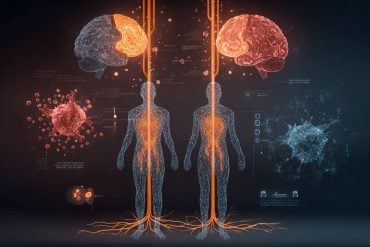Summary: New research challenges the stereotype of the solitary drinker, showing that social drinking plays a central role in the development and consequences of alcohol use disorder. Studies reveal people consistently drink more in social settings, where heavy drinking often leads to serious harms like violence, risky sex, and traffic fatalities.
Despite this, scientific studies have focused far more on solitary drinking, overlooking social motives and behaviors. The authors argue that understanding and addressing the social dimensions of drinking is crucial for reducing alcohol-related harms and preparing for similar challenges with other socially integrated substances.
Key Facts:
- Social Settings Amplify Drinking: People reliably drink more in social situations than alone.
- Serious Harms Are Social: Issues like violence, risky sex, and extreme binge drinking mostly occur during social drinking.
- Research Gaps: Solitary drinking dominates scientific focus, yet social drinking drives much of alcohol-related harm.
Source: University of Illinois
When picturing a “typical” alcoholic, people tend to imagine a person drinking at home alone.
But that focus overlooks the social origins of many serious alcohol problems, say the authors of a new review paper in the journal Current Directions in Psychological Science.

“Evidence for the centrality of social motives in problem drinking surround us,” write the authors, Catharine Fairbairn, a professor of psychology at the University of Illinois Urbana-Champaign, and Dahyeon Kang, of the University of Washington.
“While solitary drinking might serve as a useful early indicator of alcohol use disorder risk … research suggests that individuals reliably consume more alcohol in social contexts than when alone.”
The concept of problem drinkers being solitary drinkers dominates depictions of alcoholism in popular culture and influences the design of scientific studies, the authors note.
“Within the realm of alcohol use disorder research, basic scientific studies of the solitary drinker outnumber studies of the social drinker by a factor of nearly ten-fold, and theories of problem drinking seek to explain alcohol use disorder via broadly asocial mechanisms,” they write.
People tend to assume that “the mere presence of other individuals exerts a beneficial effect” that tempers the desire to overindulge when drinking, Fairbairn said.
This concept also provides some cover for those who would rather not feel responsible for acquaintances who drink excessively in social settings.
It is true that solitary drinking is a hallmark of some of the most severe cases of alcohol use disorder, “but focusing exclusively on solitary drinking ignores behaviors responsible for the majority of alcohol-related societal harms,” she said.
Young people are often initiated into the world of alcohol consumption by their peers, and heavy drinkers tend to seek out other heavy drinkers to indulge in their habit together, the authors write. Scientific studies also suggest that people tend to consume more alcohol in social settings than in private.
“Some of the most serious negative consequences from alcohol use are linked specifically with social consumption,” they write.
“In particular, alcohol-related violence, risky sex, and extreme binge drinking are all primarily or exclusively social-drinking phenomena,” as are traffic-related fatalities.
Alcohol use may quell anxiety and lower inhibition, potentially enhancing social experiences. These qualities reinforce its role as a tool for fostering feelings of social connectedness, the authors note.
In fact, studies have shown that those who report the highest levels of enjoyment from drinking in social situations also are more likely to develop alcohol-related problems. There also is evidence that people turn to alcohol in an effort to salvage troubled relationships.
The authors point to the many alcohol-related social attractions and potential harms as an example that may be repeated with other once-illicit substances like cannabis that are now gaining social acceptance.
“As an addictive drug that enjoys an extraordinary level of integration into human social life, alcohol foreshadows legal and medical dilemmas ahead,” they write.
Funding: The National Institutes of Health supported the research.
About this AUD and social neuroscience research news
Author: Diana Yates
Source: University of Illinois
Contact: Diana Yates – University of Illinois
Image: The image is credited to Neuroscience News
Original Research: Closed access.
“Social drinking and addiction: A social-cognitive model for understanding alcohol use disorder risk” by Catharine Fairbairn et al. Current Directions in Psychological Science
Abstract
Social drinking and addiction: A social-cognitive model for understanding alcohol use disorder risk
Scientists have long focused on intrapersonal factors and solitary drinking settings in researching addiction etiology. Yet evidence has accumulated to indicate a key role for social contexts in the development of alcohol use disorder.
Here we review four core characteristics of social drinking contexts that are relevant for understanding disordered drinking: prevalence, developmental timing, negative consequences, and reward value.
We present a social-cognitive model aimed at elucidating reinforcement from alcohol in social contexts and propose a role for alcohol in inhibiting higher order cognitive processes that otherwise dampen the experience of social rewards.
We also review a series of empirical studies that provide evidence for the role of social contexts in the development of alcohol use disorder, highlighting methodological challenges and indicating directions for future research.







